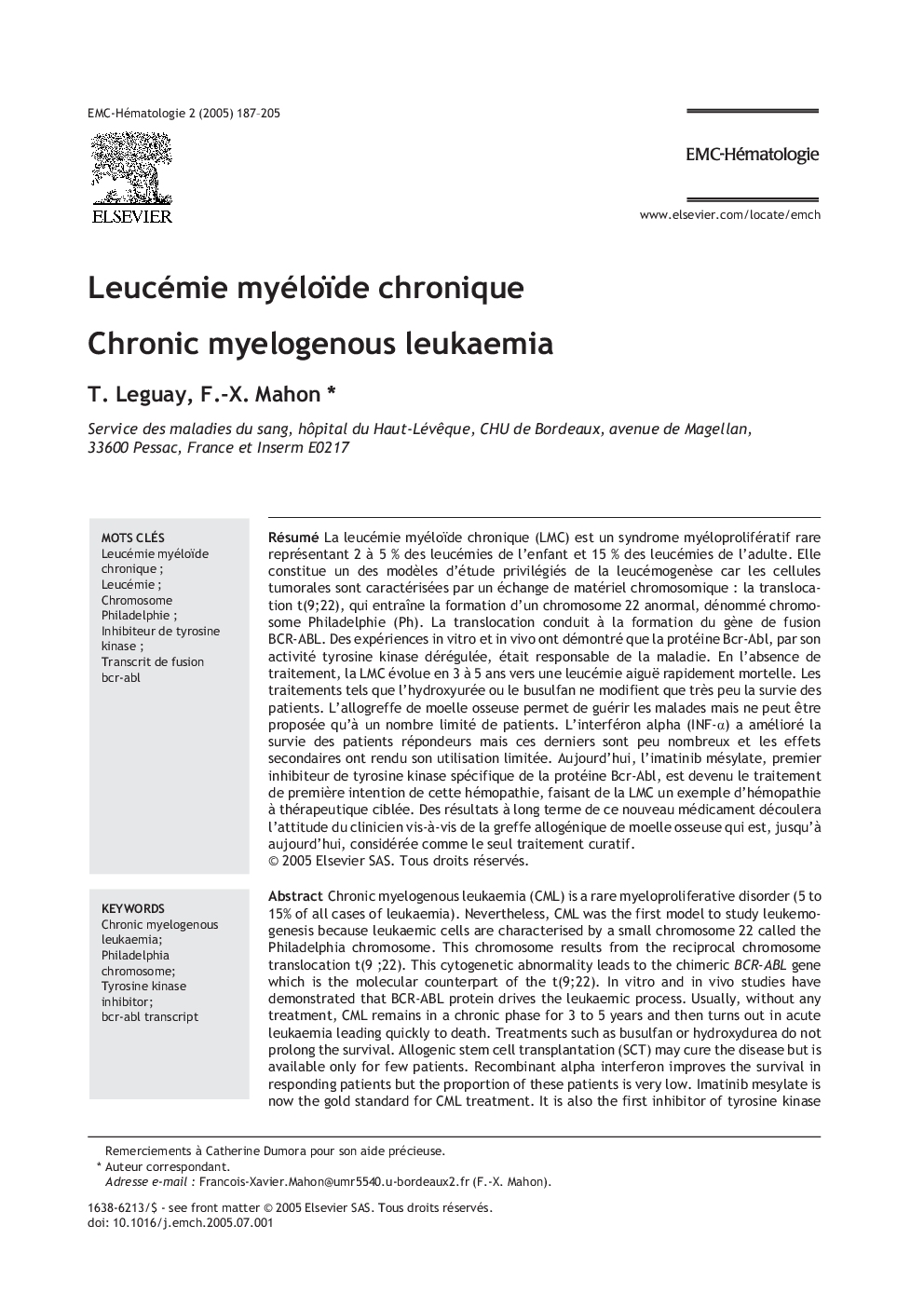| Article ID | Journal | Published Year | Pages | File Type |
|---|---|---|---|---|
| 9258274 | EMC - Hématologie | 2005 | 19 Pages |
Abstract
Chronic myelogenous leukaemia (CML) is a rare myeloproliferative disorder (5 to 15% of all cases of leukaemia). Nevertheless, CML was the first model to study leukemogenesis because leukaemic cells are characterised by a small chromosome 22 called the Philadelphia chromosome. This chromosome results from the reciprocal chromosome translocation t(9Â ;22). This cytogenetic abnormality leads to the chimeric BCR-ABL gene which is the molecular counterpart of the t(9;22). In vitro and in vivo studies have demonstrated that BCR-ABL protein drives the leukaemic process. Usually, without any treatment, CML remains in a chronic phase for 3 to 5 years and then turns out in acute leukaemia leading quickly to death. Treatments such as busulfan or hydroxydurea do not prolong the survival. Allogenic stem cell transplantation (SCT) may cure the disease but is available only for few patients. Recombinant alpha interferon improves the survival in responding patients but the proportion of these patients is very low. Imatinib mesylate is now the gold standard for CML treatment. It is also the first inhibitor of tyrosine kinase developed in haematology. Imatinib mesylate is used as a model for targeted therapies. Long-term follow up of patients treated by imatinib mesylate is necessary to redefine the place of allogenic SCT in the future.
Keywords
Related Topics
Health Sciences
Medicine and Dentistry
Hematology
Authors
T. Leguay, F.-X. Mahon,
